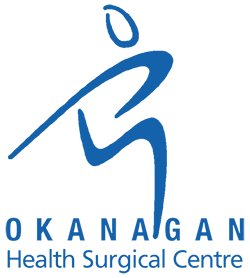
Foot and Ankle Surgery
- Home
- Orthopedic Surgery
- Foot and Ankle Surgery
Your feet are one of the most complicated parts of your anatomy, comprised of 26 bones, 33 joints and multiple tendons, ligaments and muscles. Trauma, disease and injuries are the most common culprits of foot and ankle pain and such factors can change the structure and mechanics of your feet, causing you discomfort and limited mobility. At Okanagan Health Centre, foot and ankle surgery is only considered once all the other conservative methods have been exhausted. Surgery can have many benefits including:
- Reduced pain
- Improved deformities
- Increased function
When performing foot and ankle surgery, there are many factors that must be taken into consideration. Each individual is unique and every procedure different from the next. Our team of experienced orthopedic surgeons will be able to assist you on which option is best for your personal needs and circumstances.
Foot and Ankle Arthroscopy
Foot and ankle arthroscopy is a keyhole surgical technique which allows our orthopedic surgeons to perform operations without the need for large incisions and long healing times. During the procedure, the arthroscopic device is inserted into your ankle joint, allowing our surgeons to view the inner workings of your joint and perform complex operations in a minimally invasive way. It can be used for a number of foot and ankle problems including:
- Ankle fractures
- Torn ligaments
- Ankle arthritis
- Severe ankle sprain
This surgery minimizes post-operative pain, has a shorter recovery period and has less risk of infection than with open surgery.
Foot and Ankle Fusion Surgery
Fusion surgery typically involves joining two or more bones together in the foot or ankle. Depending on which joints are being fused, the procedure involves one of our experienced foot and ankle specialists making two incisions in the foot, removing the damaged joint and stiffening the remaining bones with plates that increase your stability and allow the bones to fuse as they heal. One of the most common reasons why this surgery is carried out is to correct damage done by degenerative arthritis in the ankle. Other conditions it can treat include:
- Flat feet
- Rheumatoid arthritis
- Fractures
Achilles Tendon Repair
Your achilles is the largest tendon in your body and although it can withstand great stresses from daily activities, it is also vulnerable to injury. Damaged achilles tendons can be extremely painful and debilitating so it is important to diagnose and treat them as soon as possible.If the tendon does not repair itself naturally, then surgery must be considered. During an achilles tendon repair surgery, one of our surgeons will:
- Sew together the torn ends of the tendon
- Use a tendon graft to promote healing.
After the treatment, you will be required to wear a brace or cast for up to eight weeks to protect the tendon as it heals.
Calcaneal Osteotomy
The calcaneus (heel bone) is the largest of the tarsal bones in your feet and plays an important part in walking. A calcaneal fracture is uncommon but it can be a very painful and disabling injury. The severity of the fracture can vary depending on the cause of the injury and your doctor will consider several factors when planning your treatment including:
- The cause of the injury
- The severity of the problem
- Your overall health
- The extent of soft tissue damage
In cases where conservative treatments are insufficient, a calcaneal osteotomy will be considered. This procedure is a controlled break of your heel bone, performed by our orthopaedic foot and ankle specialists, to correct any deformities and get you back on your feet quickly and smoothly.
Contact Us
Call Us
- Address: 401-3320 Richter StKelowna, British ColumbiaV1W 4V5
- Phone: (250) 868-9799
- Toll Free: (877) 505-8895



